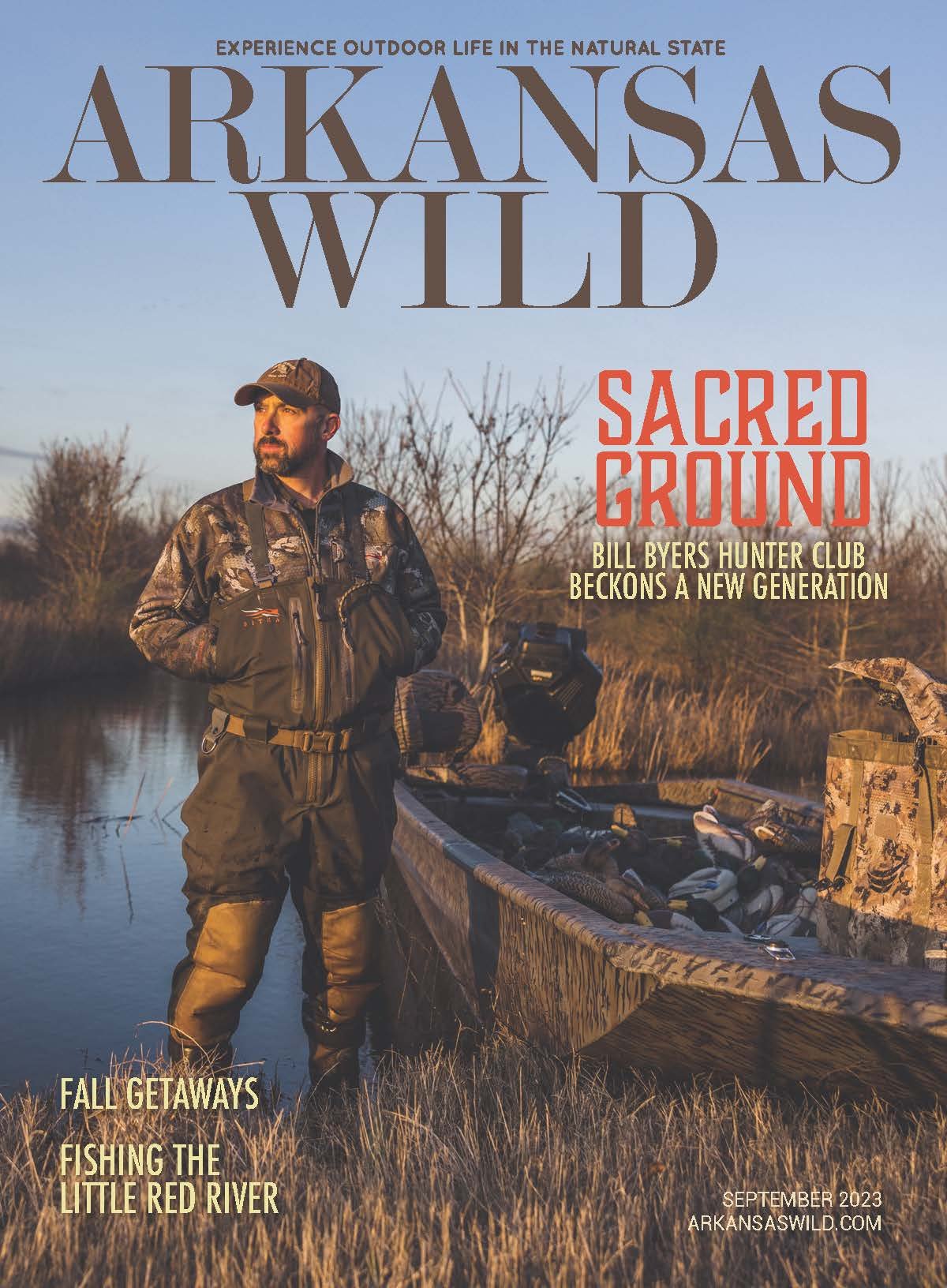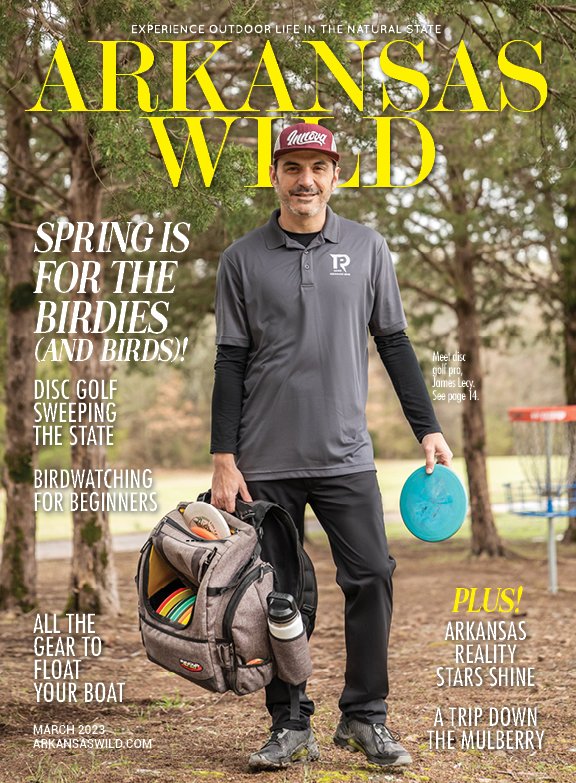Gaston’s Guide Frank Saksa shows how it’s done.
A CAST OF THOUSANDS
A greenhorn turned loose in trout heaven.
By Dwain Hebda Photography by Novo Studio
“Damn it.”
It was all the wisdom I could muster after fouling my line for what felt like the hundredth time. I really wanted to blame someone, something, anything for what was transpiring, but there was no place to hide.
I was out on the famed White River — some of the best fly-fishing in the United States — positioned there by a guide who’s forgotten more about this place than I am ever likely to know. That same guide, Frank Saksa of Gaston’s White River Resort in Lakeview, sat astern in the boat, calmly coaching my casting, suffering my meat-cleaver flails and patiently untangling the filament mess I created.
Even the weather, threatening and low-hanging when we left the dock, had stopped spitting rain as if the clouds were sitting back, nudging each other and chortling, “Check out this guy.”
“Damn it,” I muttered again.
I’d come here to see what all the excitement I’d heard of fly-fishing was about. According to a special report issued jointly by the Recreational Boating and Fishing Foundation and The Outdoor Foundation, fly-fishing’s popularity is at an all-time high. In 2018, just under 7 million anglers made 76 million fly-fishing trips, or just under 11 outings a year. What’s more, 1.2 million people gave it a go for the first time that year, representing 17 percent of all fly-fishing anglers.
Fly-fishing still only represented 2.3 percent of all anglers in 2018, lagging saltwater fishing’s 13 million anglers, and isn’t even in the same universe as freshwater fishing’s 39 million participants. But fly-fishing’s three-year growth rate topped both freshwater and saltwater, as well as fishing overall in 2018, which remained statistically flat over 2017.
Beginner gear includes Gaston’s White River Resort fly-fishing manual.
Experts see other reasons fly-fishing is the next boom outdoor activity; for one thing, its growing female participation. Women made up 21 percent of 2018 fly-fishing anglers, an increase of more than 25 percent since 2006. Secondly, its largest age demographics are 25 to 34 (19 percent) and 35 to 44 (16 percent) and third, its largest socioeconomic segment is those making more than $100,000 per year. In short, fly-fishing is a sport dominated by younger enthusiasts, one in five of whom are women, with the time and resources to indulge their outdoor passions.
I didn’t expect to master fly-fishing right out of the gate, so I had enough sense to attend fly-fishing school the morning we went out. Saksa awaited in Gaston’s conference center, just one of the amenities that the legendary resort offers along with a private airstrip and world-class restaurant. The guide slid a booklet across the table and encouraged us to take notes.
For the next few hours, Saksa dispelled every misconception we had about the sport, the kinds of things many first-timers tend to glean from binge-watching “A River Runs Through It.” He showed us how to tie knots, the difference between tippet and leader, the myriad flies used for nymphing, mid-range and surface depending on weather conditions and fish behavior.
He then took us outside onto a broad expanse of lawn for casting practice. Unlike the Zebcos of my youth, a fly rod is a marvel of energy transfer. Restricted to motion between 10 o’clock and 2 o’clock, casting is a delicate exercise in timing, waiting just long enough for the line to catch up behind you before launching it forward with little more than a flick.
Fly-fishing school starts with the very basics, including knot-tying. (Right) The author starts to get the hang of things.
Saksa said many guests skip fly-fishing school altogether, even newbies. That left me dumbstruck, given everything there is to focus on in this technical sport. Hand position, wrist and arm alignment, rod position, lock-and-load, hook set, all much different than the clunky kit on which I was raised. But under Saksa’s expert tutelage, things began to work. I took enormous pride in snaking my line out smoothly, cast after cast. This might not be so bad after all.
Following lunch, we climbed aboard and buzzed out among the dozen or so boats on the river. Saksa found the appropriate spot, gave me the look and I was up, head buzzing with everything he’d taught me. Maybe it was because I cast sitting down; maybe I’d let the slightest bit of cockiness worm into my mind. Maybe the fishing gods just weren’t going to let me have it that easy. Whatever it was, cast after initial cast was an exercise in futility.
Saksa was a good cheerleader throughout, saying how the river being so high made for challenging conditions; that fly-fishing was given to mankind to teach him patience; that if fly-fishing were music, it would be jazz. But for all that, it still came down to execution and that was on me.
At last I stood, set my feet and my jaw, and this time, remembered to roll my eyes back, watching the line curl up and over an imaginary 10-foot wall. My forearm twitched and the gossamer line sailed straight and true. It was exhilarating, not for the single good cast, but for having to work for it.
Not every cast that followed that afternoon was perfect, or even pretty, but none fouled the line again. Later, the strike indicator gurgled under and a perfect set brought in what I’d come for. The sight of the trout only reinforced my growing understanding of fly-fishing’s appeal; the rainbow wasn’t the only one who was hooked.
Chugging for home, I settled against the breeze and took time to study the awe-inspiring natural grandeur. Even in winter, the White River is jaw-dropping, silver and shimmering yet clear enough to see to the bottom. Cliffs soared on one side while ancient trees grew on the other bank, studded with waterfowl nests. Almost home, Saksa cut the engine and pointed up to where I would see my first bald eagle in the wild. It was a regal bow on a gift of a day.
Final tally – four rainbows caught and released, three spit the hook and three got away on rookie fisherman error. Part of me knew it would have been a long afternoon absent Saksa’s expert reading of the water, but I didn’t care. A seed had been planted that with time and practice, well, who knows?
I pulled out of the parking lot and pointed the car toward home, more tired than I’d expected and more satisfied, too. As the light faded, the river rushed on.






